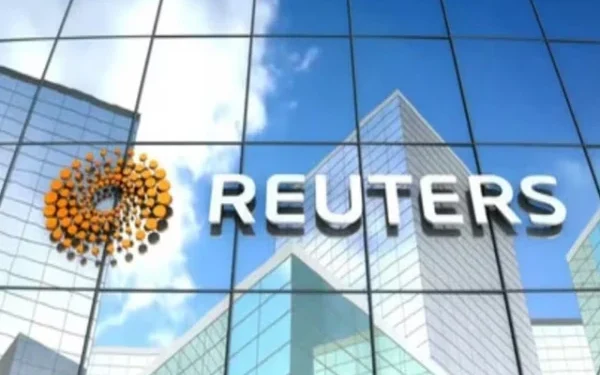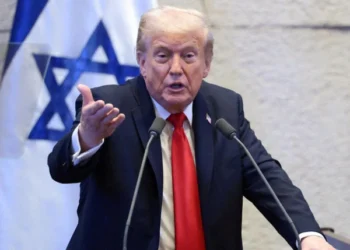India has restored access to the X (formerly Twitter) account of international news agency Reuters, days after it was suspended in India due to a legal demand. The move sparked widespread international criticism, raising fresh concerns about press freedom and government control over digital platforms in the world’s largest democracy.
The blocking of Reuters — one of the most influential global news organizations — and the opaque nature of the process surrounding the suspension have drawn backlash from media rights organizations, foreign governments, and civil society groups. Although the account has now been restored, questions linger about censorship, transparency, and the broader implications for freedom of expression in India.
🔍 Background: Reuters Account Suspension Sparks Global Backlash
On Saturday night, users attempting to access Reuters’ official X account in India were shown a message stating that the account had been blocked in response to a legal demand. The account — with more than 25 million followers globally — appeared unavailable to Indian users for over 48 hours.
The decision came without warning, and no official explanation was provided by Indian authorities or X (formerly Twitter) at the time. This led to widespread speculation and condemnation, especially as the restriction was not a localized issue, but one that involved a globally recognized press agency.
🌐 Global Reactions and Media Condemnation
The suspension sparked international outcry, with numerous global media outlets, rights organizations, and journalists questioning India’s stance on freedom of the press and its increasing intervention in digital communication platforms.
Organizations such as the Committee to Protect Journalists (CPJ) and Reporters Without Borders (RSF) issued statements criticizing the Indian government’s apparent role in the suspension. RSF labeled the action as part of a “worrying trend of escalating digital censorship in India.”
Western governments also reacted, with US State Department officials reportedly raising the issue through diplomatic channels. British and European Union media watchdogs expressed alarm over the shrinking space for free media in a country that has historically prided itself on democratic values.
📩 Restoration Without Explanation
After more than two days of global pressure and media scrutiny, Reuters’ account was restored in India. A message sent by X to Reuters’ social media team stated, “We are ending the process of blocking access to your account in India.” However, no clarification was given about what triggered the initial suspension or why it was reversed.
This lack of transparency has only deepened concerns about the procedural fairness and legality of digital takedown requests in India. Critics argue that even if the Indian government did not directly order the suspension, the legal environment fostered by recent laws enables social media platforms to act preemptively or under vague government pressure.
🇮🇳 Indian Government Denies Involvement
An Indian government spokesperson denied any official role in the suspension, stating, “No Indian government agency demanded the suspension of the Reuters account.” Yet the message displayed to Indian users cited a legal demand — typically a term used when platforms receive formal requests under laws like India’s Information Technology Act.
Legal experts and digital rights activists believe that the government may have used Section 69A of the IT Act, which allows it to direct intermediaries to block content in the interest of sovereignty, security, or public order. However, the opaque nature of such directives means that neither the public nor the affected parties are informed about the exact reasons for the content restrictions.
🧾 Reuters’ Response
A spokesperson for Reuters confirmed the account’s temporary suspension and said the news organization had been in touch with X to resolve the issue. “We are working to understand the circumstances that led to this action and have been assured that access is now restored,” the spokesperson said.
Reuters has not disclosed whether it will pursue legal or regulatory remedies regarding the account restriction. However, the incident is likely to increase pressure on international media outlets operating in India to review digital risk strategies and legal compliance measures.
🗞️ Not an Isolated Case: A Pattern of Digital Censorship?
The suspension of Reuters’ account is not an isolated incident. Over the past few years, several prominent news accounts, including BBC Punjabi, Al Jazeera, and local Indian outlets, have faced takedown orders or temporary suspensions.
In 2021, Twitter India faced significant government pressure after refusing to take down accounts critical of the government’s handling of the farmers’ protests. Later, Twitter executives were summoned, and threats of legal action were made. Eventually, the platform complied with many takedown requests.
Similarly, The Caravan, an Indian investigative magazine, had its account blocked temporarily in India. These actions have raised alarms about a creeping authoritarianism in India’s digital policy space.
⚖️ Legal Framework: Section 69A and Content Takedowns
Under Section 69A of India’s Information Technology Act (2000), the government has the power to block access to any content deemed a threat to national security, public order, or morality. However, the procedure is opaque, and the affected party is often not given the opportunity to defend itself.
Critics argue that this legal framework enables arbitrary censorship and limits judicial oversight. Transparency reports from tech companies have shown a dramatic increase in content takedown requests from India in recent years.
According to X’s own transparency report, India is among the top countries requesting content removal — especially posts critical of the government or those related to protests, human rights violations, or Kashmir.
🗨️ Free Press in Peril?
The Reuters episode has reignited debate about press freedom in India, which has seen a notable decline in recent years. In Reporters Without Borders’ 2024 World Press Freedom Index, India ranked 161 out of 180 countries, a significant fall from earlier positions.
Media watchdogs cite government control, online harassment of journalists, misuse of sedition and anti-terror laws, and digital censorship as major challenges to journalistic independence.
Senior journalist and media analyst Seema Chishti commented, “The targeting of a global news agency like Reuters shows that no outlet is immune from government pressure. This is a dangerous sign for media freedom not just in India but across South Asia.”
📱 Social Media Platforms Under Scrutiny
The role of platforms like X, Meta (Facebook/Instagram), and YouTube has come under increasing scrutiny as they are often caught between complying with local regulations and protecting users’ rights to free expression.
Digital rights activists argue that lack of transparency in content moderation and algorithmic bias contribute to systemic censorship, often favoring powerful political interests.
X’s actions in the Reuters case have reignited calls for clearer accountability and more robust appeal mechanisms, especially when dealing with content related to journalism and public interest reporting.
📣 Conclusion: A Wake-Up Call for Global Media and Civil Liberties
While the restoration of Reuters’ account may seem like a return to normalcy, the episode has exposed deep flaws in India’s approach to digital governance and press freedom. It has also highlighted the challenges faced by international media houses operating in increasingly restrictive environments.
This incident serves as a wake-up call not only for journalists but also for tech companies, civil society organizations, and democratic institutions worldwide. Transparency, accountability, and a commitment to freedom of expression are essential to prevent similar incidents in the future.

























